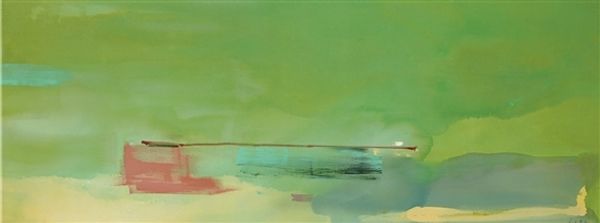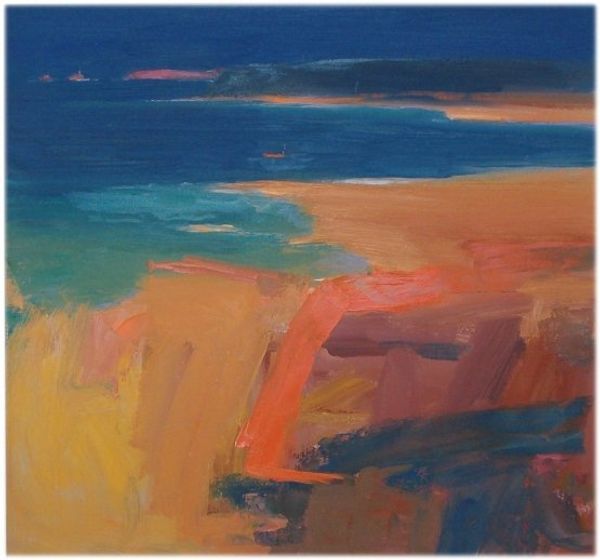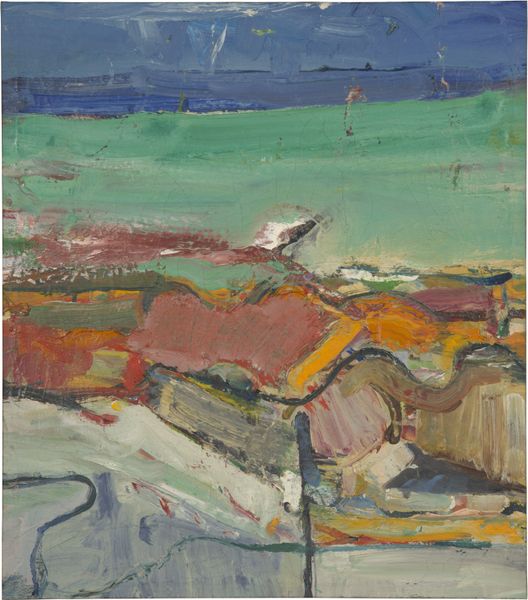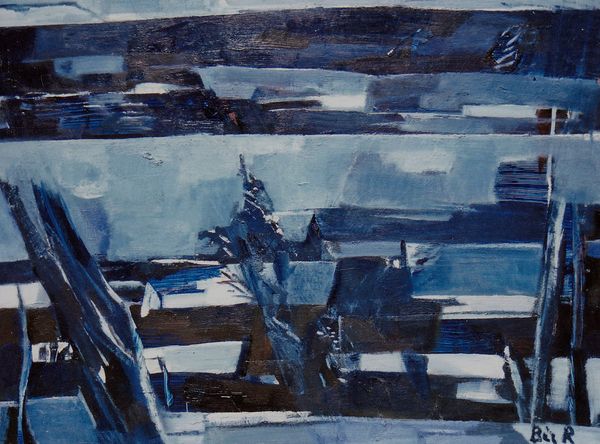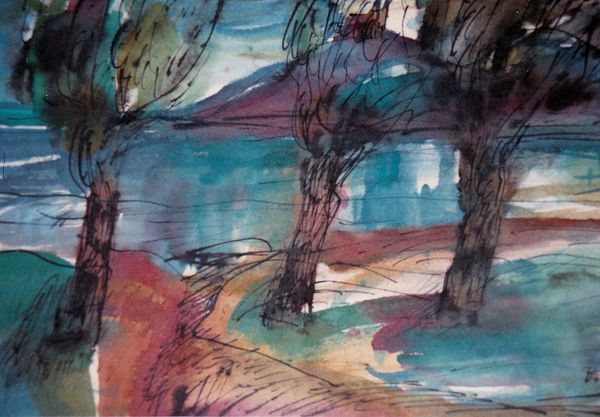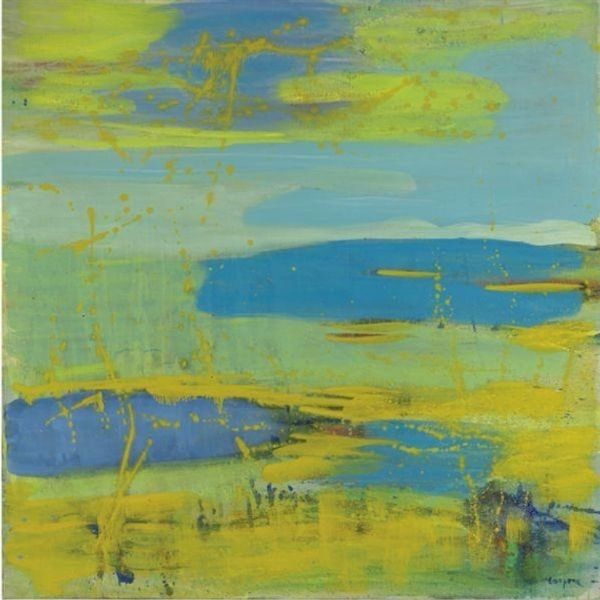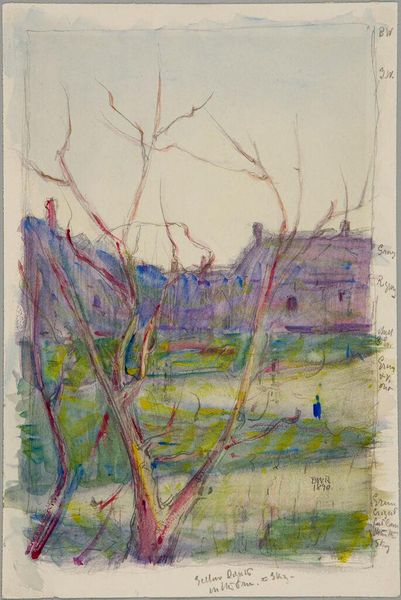
painting, gouache
#
cubism
#
painting
#
canvas painting
#
gouache
#
landscape
#
painted
#
geometric
#
modernism
Dimensions: overall: 100 x 81.6 cm (39 3/8 x 32 1/8 in.) framed: 128.3 x 110.2 x 7.6 cm (50 1/2 x 43 3/8 x 3 in.)
Copyright: National Gallery of Art: CC0 1.0
Editor: We're looking at "The Bridge of Beaugency," a gouache on canvas painting by Jacques Villon from 1944. I'm immediately struck by the use of geometric forms and the almost dreamlike quality of the landscape, particularly the yellow sky. What's your take on this piece? Curator: Given the context of 1944, during World War II, I see this painting not just as a landscape, but also a potential commentary on the French countryside amidst conflict. The fragmented, almost cubist style, perhaps reflects the fractured state of the nation. Villon's choice of gouache also hints at a certain immediacy, as if trying to capture a fleeting moment of peace amidst turmoil. Editor: That’s a compelling perspective. The fragmentation feels deliberate now, representing instability. Is there a specific reason Beaugency was chosen, or is it more of a symbolic location? Curator: Beaugency, like many French towns, would have experienced the war's impact directly. Bridges, particularly, are strategically vital and symbolically potent, often becoming targets. Villon might be using this particular bridge to represent resilience and connection, or conversely, vulnerability. Notice the yellow sky – how does that strike you in relation to the events of the time? Editor: It's almost ominous now that you mention it. Initially, I found it uplifting, but considering the war, it feels more like a warning or perhaps even the smoke and fire of conflict in the distance. The vibrant color becomes unsettling. Curator: Precisely. The painting exists in a complicated public and private relationship with its subject. It reminds us that landscapes are never just pretty pictures; they are imbued with history and cultural significance. Editor: This has given me a completely new appreciation for considering historical context when looking at art. Curator: And for realizing that art's beauty can mask deeper, sometimes darker, truths.
Comments
No comments
Be the first to comment and join the conversation on the ultimate creative platform.


